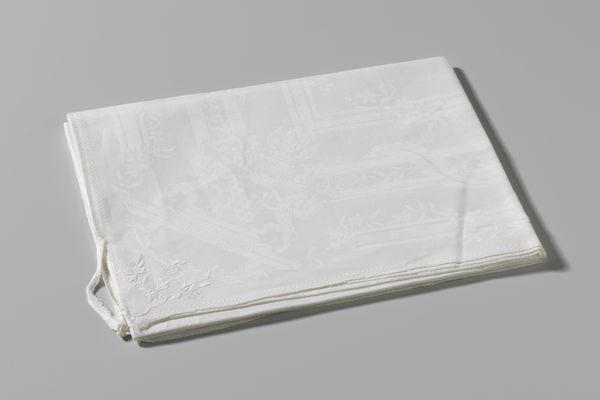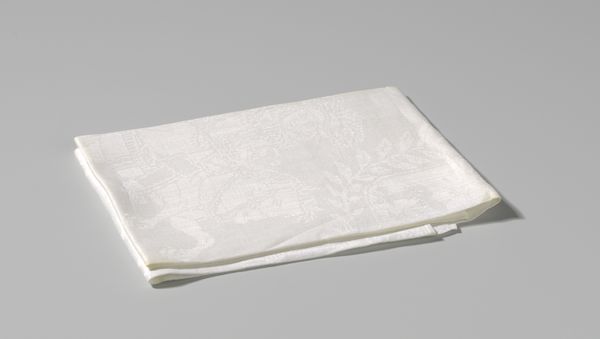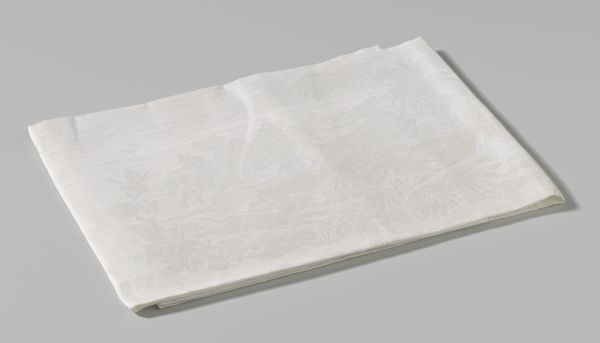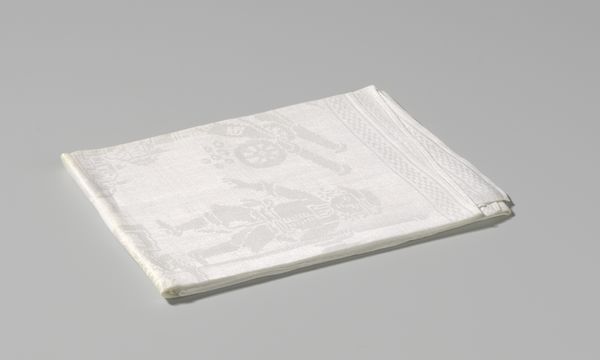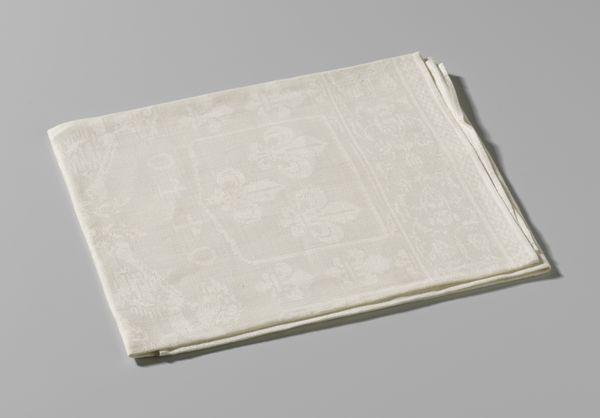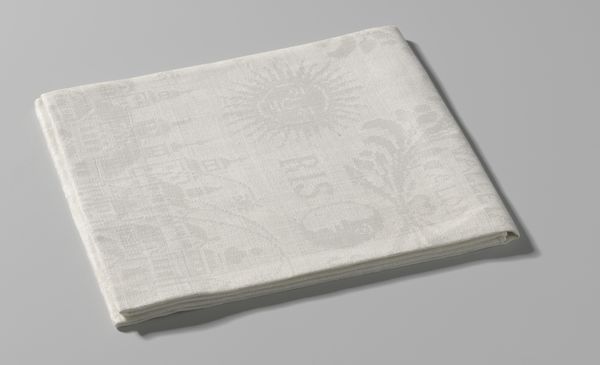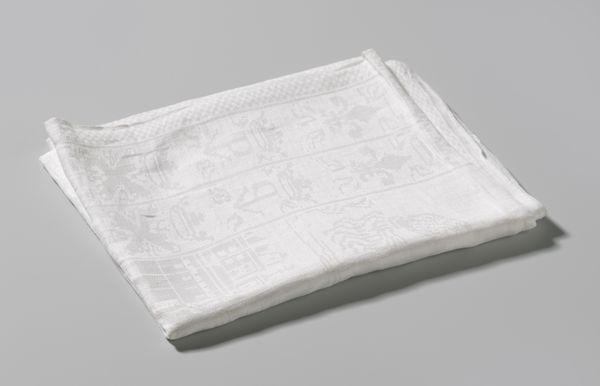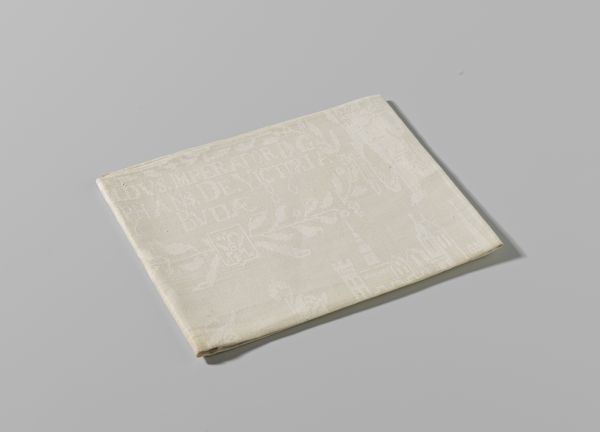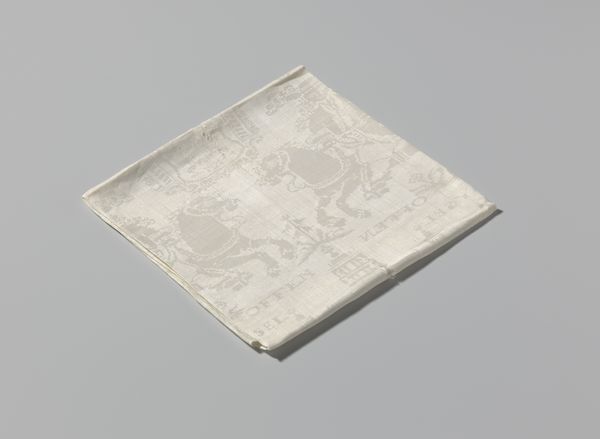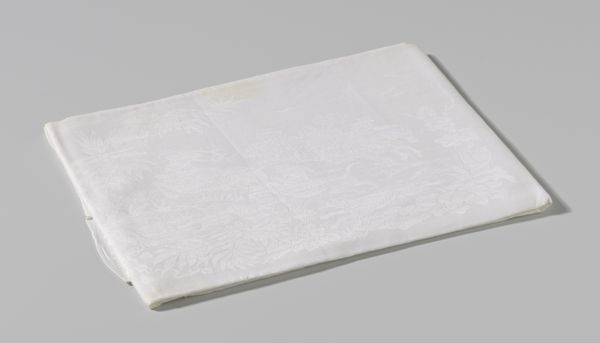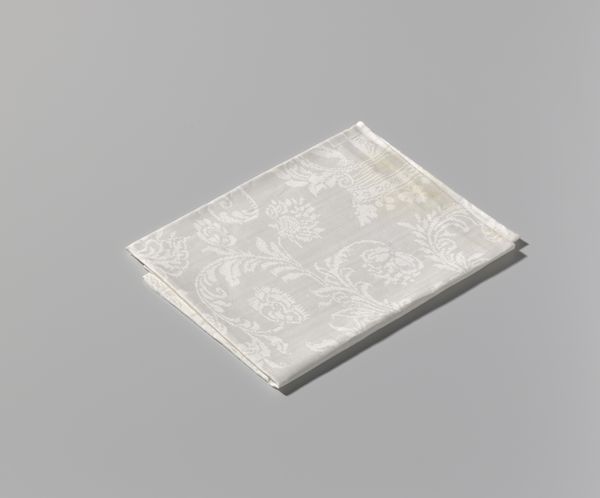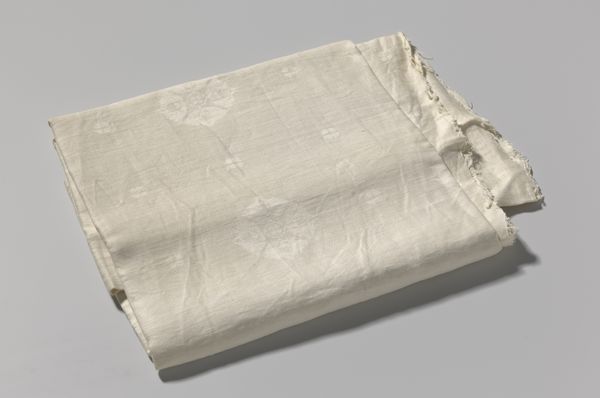
weaving, textile
#
weaving
#
textile
#
geometric
Dimensions: length 115.0 cm, width 85.0 cm
Copyright: Rijks Museum: Open Domain
Here is the damask napkin with the Van der Dussen family coat of arms. It was created by Firma J. Maas. The pattern is woven tone-on-tone, so the imagery relies on a play of light and texture. The napkin presents a flat surface, yet it suggests depth through its intricate design of heraldic symbols and geometric borders. The absence of color directs our attention to the structure of the weave itself. In a semiotic sense, the whiteness can be interpreted as a signifier of purity, or elegance. The family crest, repeated across the fabric, functions as a symbol of identity and lineage. The weave destabilizes the boundary between the functional and the symbolic, as a mundane object such as a napkin becomes a canvas for expressing social status. Consider how the texture and pattern of the damask both reveal and conceal the image. It invites us to consider the relationship between surface and structure, and how meaning is constructed through subtle variations in form.
Comments
No comments
Be the first to comment and join the conversation on the ultimate creative platform.
